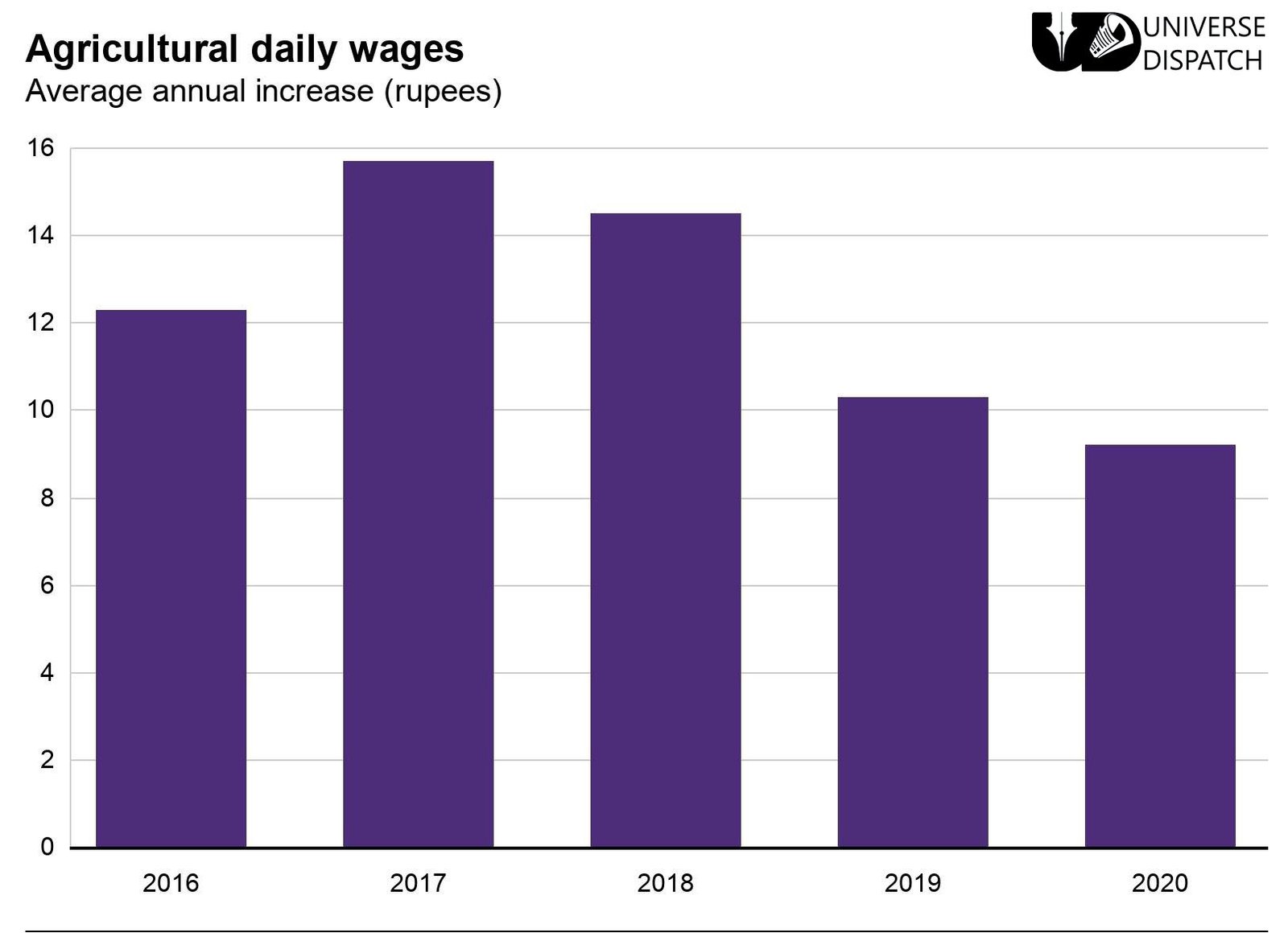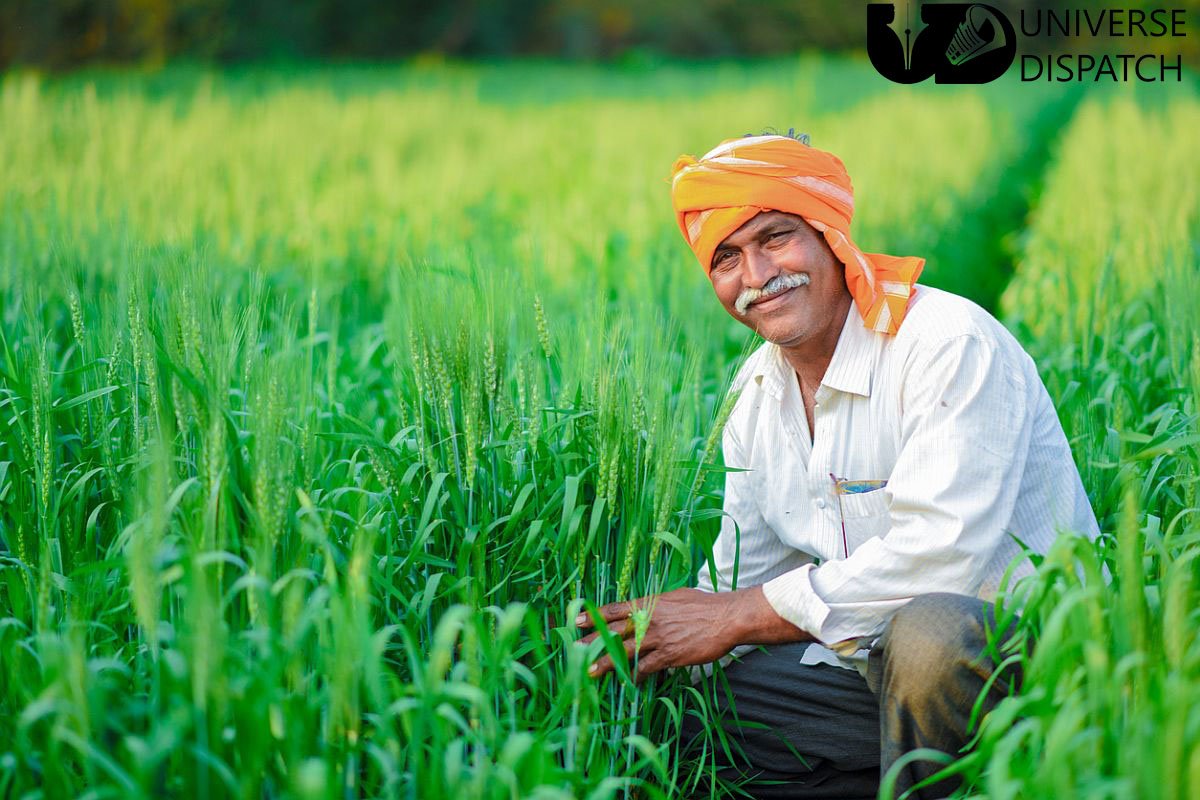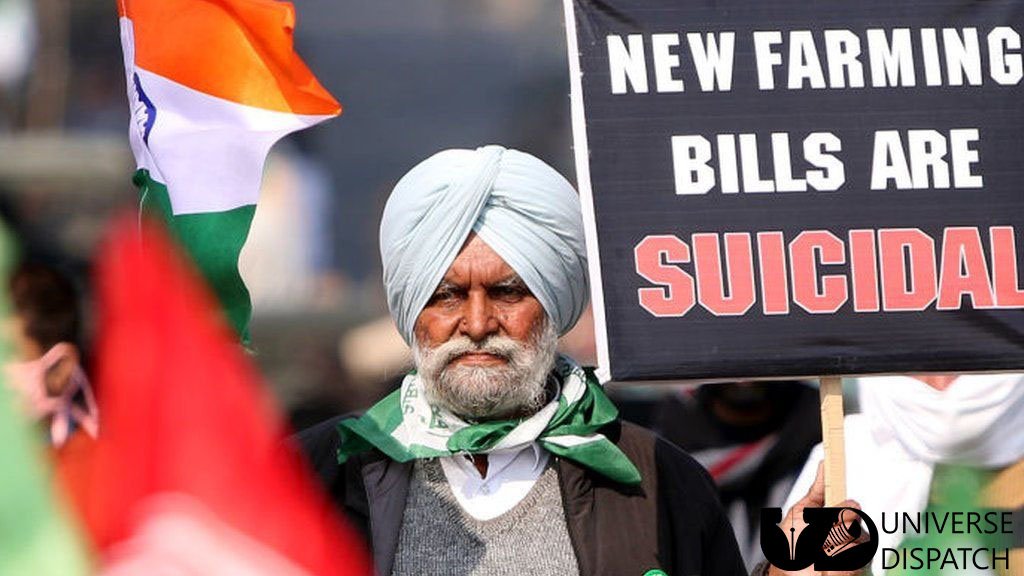India Farmer Protests: How Rural Incomes have Struggled to Keep Up
Farmer: Indian farmers have been on the road since November last year. Seeking repeal of three new farm laws and demanding minimum prices for their produce.
Leaders from the ruling Bharatiya Janata Party (BJP) say the new farm laws will double farmers’ income – a promise made by Prime Minister Narendra Modi in 2016.
What’s happened to Rural Incomes?
More than 40% of India’s farmer workforce is engaged in agriculture, according to the World Bank. There are no official figures for rural household income in recent years, but there is data on agricultural wages which shows the rate of growth slowing down between 2014 and 2019.

India has seen rising inflation in the last few years. World Bank data showing that consumer price inflation grew from just under 2.5% in 2017 to nearly 7.7% in 2019. India conducted surveys in 2013 and 2016 which showed an increase in farmers’ incomes in absolute terms of nearly 40% over that period.
However, a report by the Organization for Economic Co-operation and Development (OECD) in 2018. Estimated that in real terms, farmers’ income increased by just 2% a year over those three years.
The report also makes clear that these farmer’s income was just one-third of those for non-agricultural households. Agricultural policy expert Devinder Sharma believes farmers’ income in real terms has remained stagnant or even declined for several decades.
He also points to the rising costs that farmers face, as well as the wildly fluctuating prices they receive for their produce. It’s also worth adding that in recent years, there have been periods of extreme weather such as droughts, which have seriously affected livelihood.
Are Government Targets being Met?
In 2017, a government committee reported that income for farmers would need to grow by 10.4% each year from 2015 for them to double by 2022.

The government needed to invest 6.39bn rupees in the agricultural sector. Data on both public and private investment shows it has been falling.
In 2011-12, investment in agriculture as a percentage of total investment stood at 8.5%. It rose to 8.6% in 2013-14 and then fell, staying more or less flat at between 6% and 7% since 2015.
Farmers sinking into Debt:
An official government survey carried out in 2016. In that, the National Bank for Agriculture and Rural Development found that in three years up to this point. The average amount of debt that farmers were liable for had more than doubled. Previously the farmers facing high levels of debt and the political debate over whether they should receive debt relief.
There have been attempts at the federal and state level over the years to give farmers direct financial and other support, such as subsidies for fertilizers and seeds and special credit schemes.

In 2019, the federal government announced a direct cash transfer scheme targeting 80 million farmers. Under the scheme, the government provides income support of 6,000 Rupees per year. Six states in India already had their own state-run cash transfer schemes for farmers prior to that. Devinder Sharma says such schemes have helped raise farmers’ income.
“The government brought indirect income support to farmers and it eases a good step in the right direction.” But we don’t yet have the data to show if these schemes have worked or not.
Ashok Dalwai, chairman of an official committee looking into increasing farmers’ incomes, says he believes the government is on the right track. “We should wait for the data,” he says. “But, I can say that the last three years would have accelerated the growth and we will have more robust growth thereafter”.




